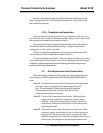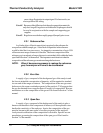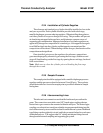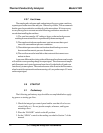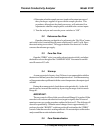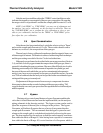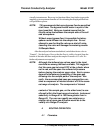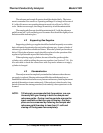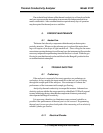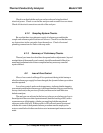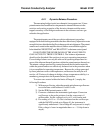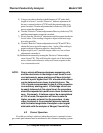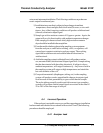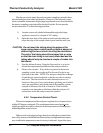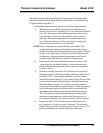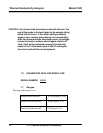
Teledyne Analytical Instruments
17
Thermal Conductivity Analyzer Model 212R
Due to the delicate balance of the thermal conductivity cell employed in the
analyzer, exposure to the atmosphere in an uncontrolled temperature environ-
ment is undesirable. After extended shutdown periods many days of operation
may be required for the analyzer to re-stabilize.
5. PERIODIC MAINTENANCE
5.1 Heater Fan.
The heater fan is the only component within the analyzer that requires
periodic attention. Whenever the reference gas is replaced the motor bear-
ings will require a few drops of light machine oil. Since oiling the fan motor
necessitates opening the inner door of the analyzer, the instrument will require the
necessary temperature equilibrating time after the door is closed. With zero gas
flowing be sure that the analyzer has stabilized on the Range #1 position before
re-standardization is attempted.
6. TROUBLE SHOOTING
6.1 Preliminary.
If the analyzer is suspected of incorrect operation, as a preliminary to
evaluation, always arrange the input manifold so that zero gas is flowing
through the sample path of the analyzer. Never attempt to evaluate the
performance of the instrument with sample gas flowing.
Analysis by thermal conductivity is nonspecific in nature. A thermal con-
ductivity analyzer with the fine range sensitivity of the Model 212R will respond
to many influencing factors other than the component of interest; particularly
when operated at Range #1 sensitivity.
It is necessary, therefore, to eliminate as many external variables as
possible if the performance of the analyzer is to be assessed. Programming
the analyzer for zero gas places both paths of the measuring cell on relatively
reliable cylinder gas sources.
6.1.1 Electrical Checks.



